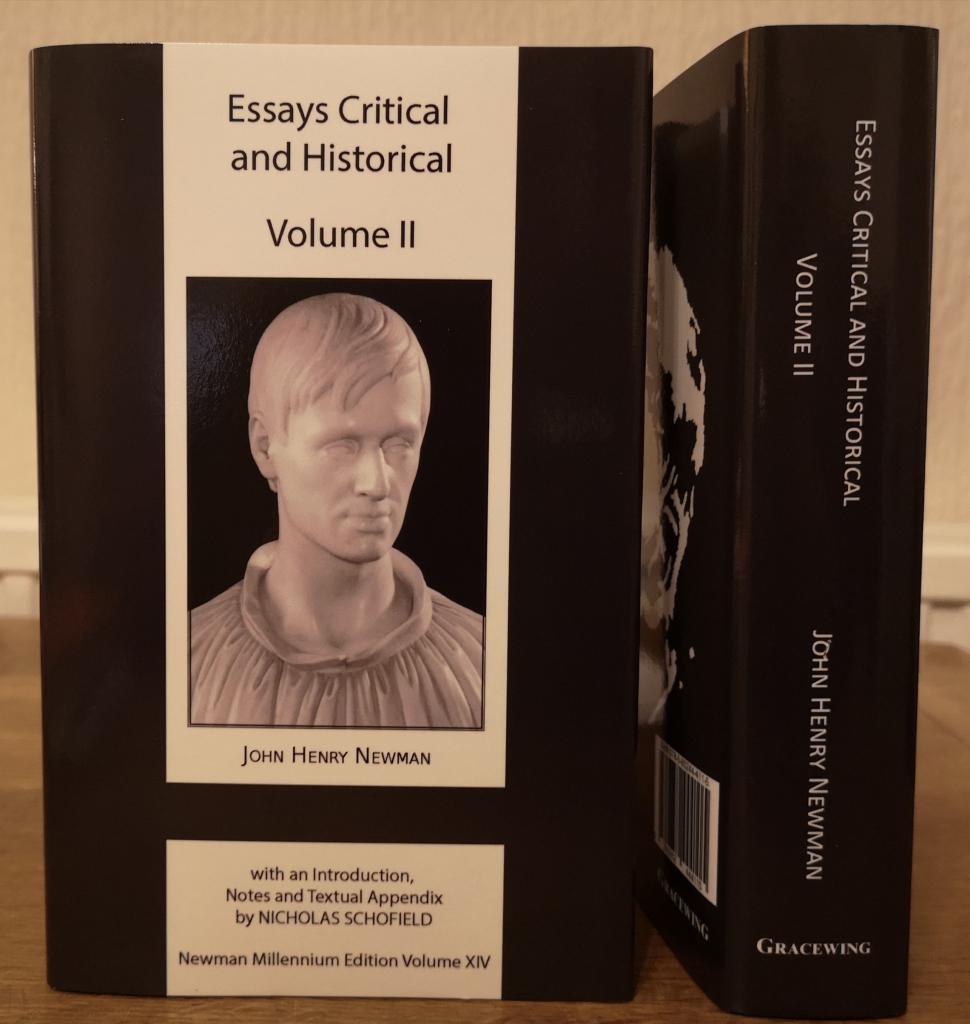By Fr Nicholas Schofield
Ten years ago I was asked to help prepare a new edition of one of the lesser known works of our new saint, John Henry Newman: Essays Critical and Historical. It was recently published as part of Gracewing’s ‘Newman Millennium Edition’.
Most people have heard of Newman’s autobiographical Apologia pro vita sua, his Essay on the Development of Christian Doctrine or his famous sermons, but there are many volumes which have slipped into relative oblivion and are waiting to be discovered.
I was asked to work on the second volume of Essays Critical and Historical. If I am honest, when I began work on the edition I wondered whether the essays were really worthy of re-publication. They are almost all book reviews that Newman wrote in the early 1840s, with wide-ranging themes such as church history, private judgement, the prophecies of Daniel and the Catholicity of the Anglican Church. He later decided to collect them together for republication in 1871. I asked myself: would anyone really be interested in reading them today?
As time went on, however, I realised that they were a lot more significant than their rather dull title suggests. All but one of the essays in the volume were written when Newman was still an Anglican. It is indeed surprising how the author republished them, just eight years off being made a cardinal, and was content for them to stand as they were, with very little adaptation. It reminds us that Newman’s life had a remarkable consistency: a gradual development of thought and awareness of God’s plan for him, rather like different movements in a symphony.
Many of the essays were written shortly before Newman’s conversion, when he was living at Littlemore. He initially convinced himself that the Church of England possessed ‘Catholicity’ despite its separation from the rest of the Universal Church but doubts about his position continued to grow. Meanwhile, old prejudices about Catholicism were dying in his mind, such as the old Protestant prejudice identifying Rome with the Antichrist, dealt with in one of the essays.
Another essay, focusing on the eleventh century pope St Gregory VII, shows that Newman not only looked back to the early Church for inspiration but also to the middle ages. He stressed the importance of church history and noted that ignorance of it damaged ‘our whole view of the Gospel truth’ and led to many a misconception. Perhaps he saw something of himself in Pope Gregory, who ‘thought he had failed’ in his work of reform. Newman concluded: ‘so it is; often a cause seems to decline as its champion grows in years, and to die in his death; but this is to judge hastily; others are destined to complete what he began. No man is given to see his work through.’
This second volume of Essays Critical and Historical provides a snapshot of the development of Newman’s thought in a crucially important period, as he came to realise the possibility of doctrinal development and the importance of a correct reading of ecclesiastical history. Throughout these essays, he used the past to interpret the present and saw his own struggles in the lives of those who have gone before.
It has been a great privilege working with Newman on this new edition of long-forgotten articles. His writings are always full of profound insights, with the occasional surprise or moment of humour along the way. May he continue to inspire us as we search for and proclaim the same truths today.
Newman’s Essays Critical and Historical (volume 2) is published by Gracewing, ISBN: 9780852444115.700 pp. £35 (hb).



